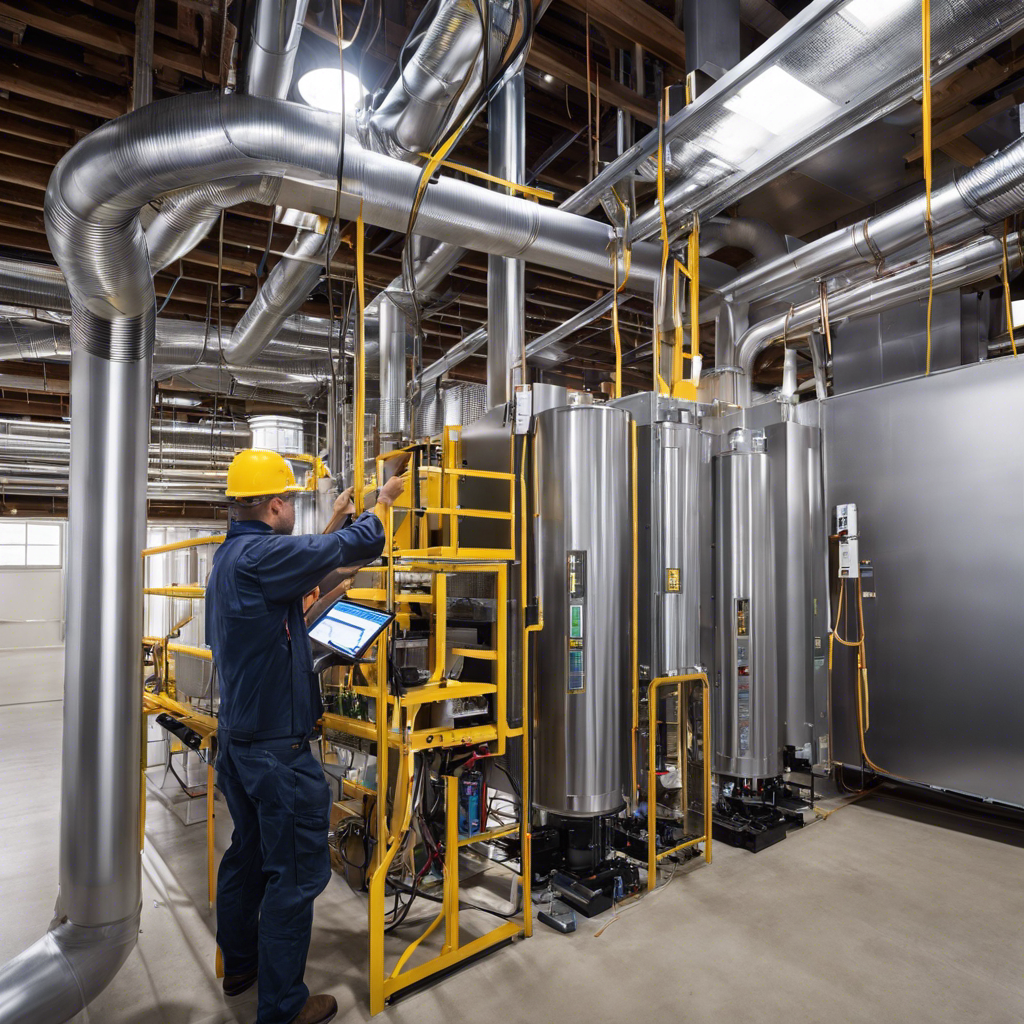The timeline of HVAC rough-in is a crucial aspect of any installation project. This process involves several stages that ensure the efficient and effective functioning of your HVAC system.
From the initial consultation to the final testing and completion, each step plays a vital role in creating a comfortable and energy-efficient environment for your home or workplace. By adhering to this timeline, you can expect a smooth installation process that minimizes disruptions and maximizes the performance of your HVAC system.
In this article, we will explore each stage of the timeline, highlighting what you can expect during installation. Whether you are a homeowner or a business owner, understanding the timeline of HVAC rough-in will provide you with the knowledge and confidence to make informed decisions throughout the installation process.
Key Takeaways
- HVAC contractors assess existing ductwork and insulation during the initial consultation.
- Design and planning involve considering building layout, room sizes, and window/door locations.
- Material procurement includes procuring necessary materials such as ductwork, furnaces, and condenser units.
- Rough-in installation involves installing ductwork and HVAC equipment, connecting HVAC equipment to the ductwork system, and installing vents and registers for proper air distribution.
Initial Consultation
During the initial consultation, HVAC contractors assess the existing ductwork and insulation to determine the size and type of the system. This step is crucial in ensuring that the HVAC system is properly installed and functions optimally.
By evaluating the ductwork and insulation, contractors can identify any potential issues or areas that may need improvement. They will consider factors such as the size of the space, the number of rooms, and the desired temperature control to determine the appropriate size of the system.
Additionally, the initial consultation allows contractors to provide a cost estimate for the installation and guide the client through the permitting process. It also involves evaluating the location for HVAC equipment installation and coordinating with other contractors for seamless integration.
Design and Planning
Once the initial consultation is complete, the next step in the HVAC rough-in process involves designing and planning the installation. This crucial phase ensures that the HVAC system is designed to provide optimal performance and efficiency.
During the design and planning stage, factors such as the layout of the building, the size of the rooms, and the location of windows and doors are taken into consideration. This information helps determine the best placement for the HVAC equipment and ductwork, ensuring proper airflow and temperature control throughout the building.
Additionally, the design and planning phase allows for easy access to the HVAC system during installation and future maintenance, as well as coordination with other contractors to ensure seamless integration with other building systems.
Material Procurement
For a successful HVAC rough-in installation, the first step is to procure the necessary materials. This includes ductwork, furnaces, heat pumps, condenser units, and propane lines if applicable. Gas-powered appliances may require propane lines, so careful planning and procurement during the rough-in stage are crucial.
It is important to assess the installation location to determine the specific materials needed. Properly sizing the ductwork is also essential to ensure optimal airflow. Coordinating with other contractors is vital to ensure seamless integration of the HVAC system with other components of the building.
The HVAC contractor must carefully plan and order the materials, ensuring they are of the right specifications and meet the project requirements. This involves considering the installation process and ensuring all necessary wires and accessories are included.
Rough-In Installation
The initial stage of the HVAC rough-in process involves the installation of ductwork and HVAC equipment. HVAC contractors carefully plan and execute the installation, ensuring optimal functionality and efficiency of the system. The installation takes place in the attic, crawlspace, or basement, providing the foundation for plumbing and electrical work to follow.
During this stage, the HVAC contractors connect the HVAC equipment, such as the furnace and air conditioning unit, to the ductwork system. They also install the necessary vents and registers throughout the building to facilitate proper air distribution. Additionally, gas-powered appliances may require the installation of propane lines.
It is crucial for the HVAC contractors to ensure correct sizing of the ductwork to achieve optimal airflow. Proper installation during the rough-in stage sets the stage for future maintenance and repairs.
Final Testing and Completion
How can HVAC contractors ensure optimal performance and seamless operation of the system after the rough-in installation?
Final testing and completion are crucial steps in achieving this goal. During final testing, HVAC contractors thoroughly check the system for efficiency, leaks, and refrigerant levels to ensure optimal performance. They also fine-tune settings and program schedules to ensure the HVAC system operates at its best.
Additionally, HVAC contractors ensure that all components are properly synchronized for seamless operation. It is important to establish a maintenance schedule after the final testing phase. This ensures that routine maintenance is performed regularly to keep the system running smoothly and to prevent any potential issues.
Frequently Asked Questions
What Does HVAC Rough in Include?
HVAC rough-in includes the installation of ductwork, HVAC equipment, and components such as the furnace, heat pump, condenser unit, and propane lines. It involves preparing for the installation, addressing common challenges, and ensuring efficient air distribution and future maintenance.
What Are the Major Phases of System Installation Hvac?
The major phases of system installation for HVAC rough-in include the preparation of the site, installation of ductwork and HVAC equipment, connection of electrical and plumbing components, testing and inspection, and final adjustments for optimal performance.
How Long Does It Take for an HVAC System to Be Installed?
The duration of HVAC installation varies depending on factors such as the size and complexity of the system, site conditions, and the availability of resources. On average, it can take several days to a few weeks for the installation process to be completed.
What Are the Steps to Install Hvac?
The steps to install HVAC involve assessing system size, evaluating existing ductwork, removing the old system, making necessary modifications and upgrades, carefully installing equipment, testing system efficiency, and establishing a maintenance schedule.
Conclusion
In conclusion, the timeline of HVAC rough-in is a crucial process that involves careful planning, installation, testing, and maintenance. By following this timeline, proper functioning of the system is ensured, energy efficiency is improved, and future maintenance issues are prevented.
The components of HVAC rough-in, including ductwork, furnace, heat pump, condenser unit, and propane lines, if applicable, are all essential for the system’s performance.
Overall, proper HVAC rough-in allows for easier installation of plumbing and electrical systems and reduces the risk of equipment damage.


